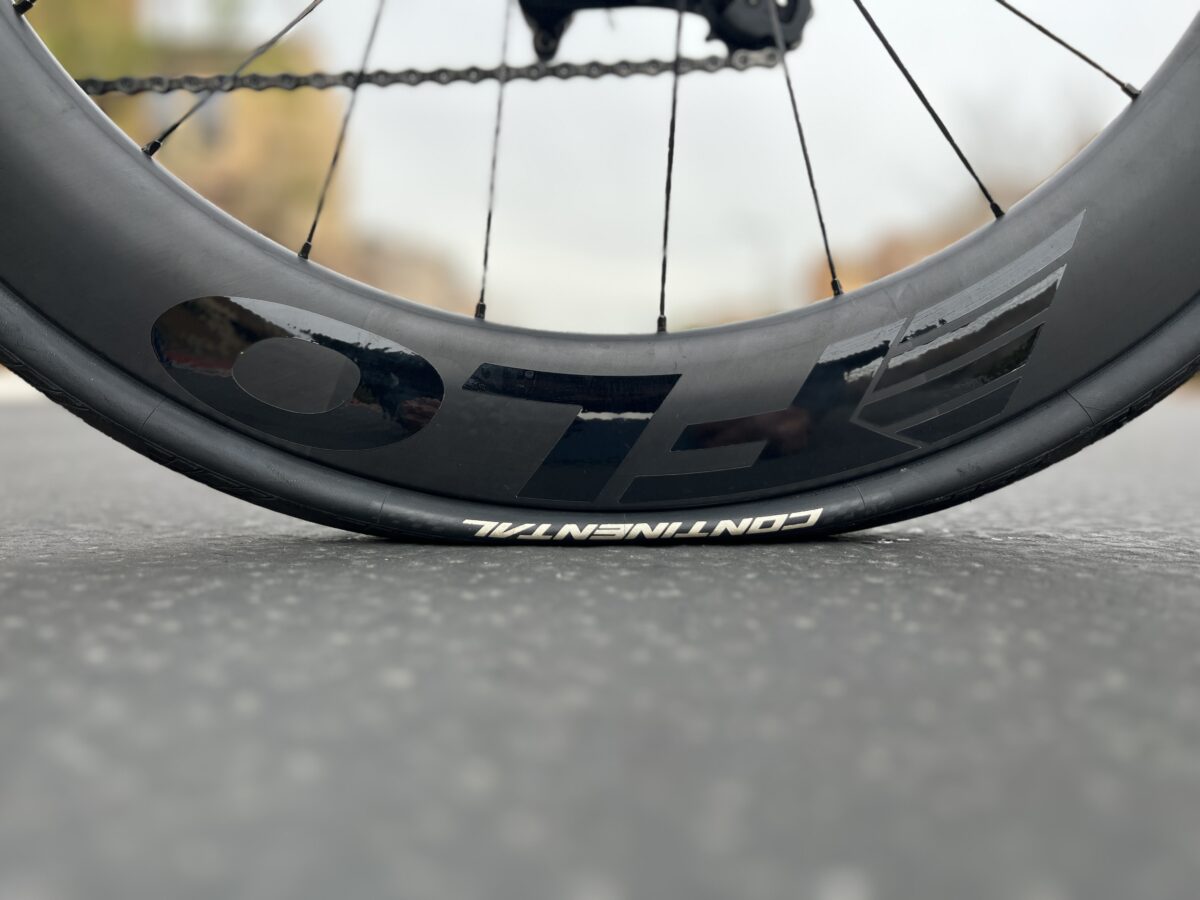“Lower your rolling resistance” doesn’t slide off the tongue as well as “be aero” but it’s just as important!
Rolling Resistance and Mechanical Efficiency
No wasted watts is our new motto. The higher the rolling resistance, the more energy (heat and sound) produced, the more watts wasted, therefore, if we lower rolling resistance, fewer watts will be wasted, and more minutes (yes, minutes!) will be saved on your next triathlon.

Rolling Resistance 101
So, what is rolling resistance? It’s complex but we’ll try to simplify. When a wheel, like a cycling wheel, rolls on a surface, the force that resists the rolling motion of the wheel is called rolling resistance force. A consumption of watts is required to overcome rolling resistance force. Rolling resistance in pneumatic tires (the tires you use) is caused by hysteresis. When your tire makes contact with the road, it deforms a small amount making a contact patch. As your wheel rolls, the contact patch moves to the new section of tire making contact with the road. The energy used to deform the tire at the beginning of the contact patch is greater than the energy recovered at the end of the contact patch leaving the road. The length of the contact patch affects rolling resistance. The energy loss is caused by the creation of heat (and sound) in the rubber when the tire deforms. This is where you waste your watts.
In the simplest form, lower rolling resistance makes it easier to roll your wheel, enough said, right?
How To Lower Your Rolling Resistance as a Triathlete:
- Tire Selection
The difference between a good and bad tire can mean 8 minutes over an Ironman. The number one tire we suggest is the Continental GP 5000.
- Optimize Your Tire Pressure
The days of 120 psi are long gone. 😱
Too High Tire pressure = bouncy ride (watts are are used to move you up and down, not forward) with less grip
Don’t be fooled by how a lower tire pressure “feels.” Your brain often perceives vibration as “going fast” but lowering the tire pressure lessens vibration, the bouncing, which makes you faster. (Trust us, we have hundred of hours proving this, too!)
Use our tire pressure charts on each of the wheel product pages to help select your perfect tire pressure.
Wheels and Rolling Resistance
It’s not just about tires. A wheel’s design matters, too. In order to design rims that lowered rolling resistance, we teamed up with UNLV and used advanced on-bike computers to develop an on-road testing protocol to prove that rims with a wider internal rim width are faster. A wider internal rim width increases the width and decreases the length of the contact patch, making the rolling moment easier to overcome, therefore lowering the rolling resistance. The FLO All Sport (AS) line has a wider internal rim width than the previous generation which will save you two watts!
Wheel 1:1
We’ve only scratched the surface of rolling resistance, but these basics will give you more knowledge than 95% of your competitors. If you’d like to discuss rolling resistance in detail and learn how to optimize your wheels for your next triathlon, feel free to book a Wheel 1 on 1.

Co-founder at FLO Cycling. Jon manages the day to day operations and acts as the lead engineer for all FLO products.
